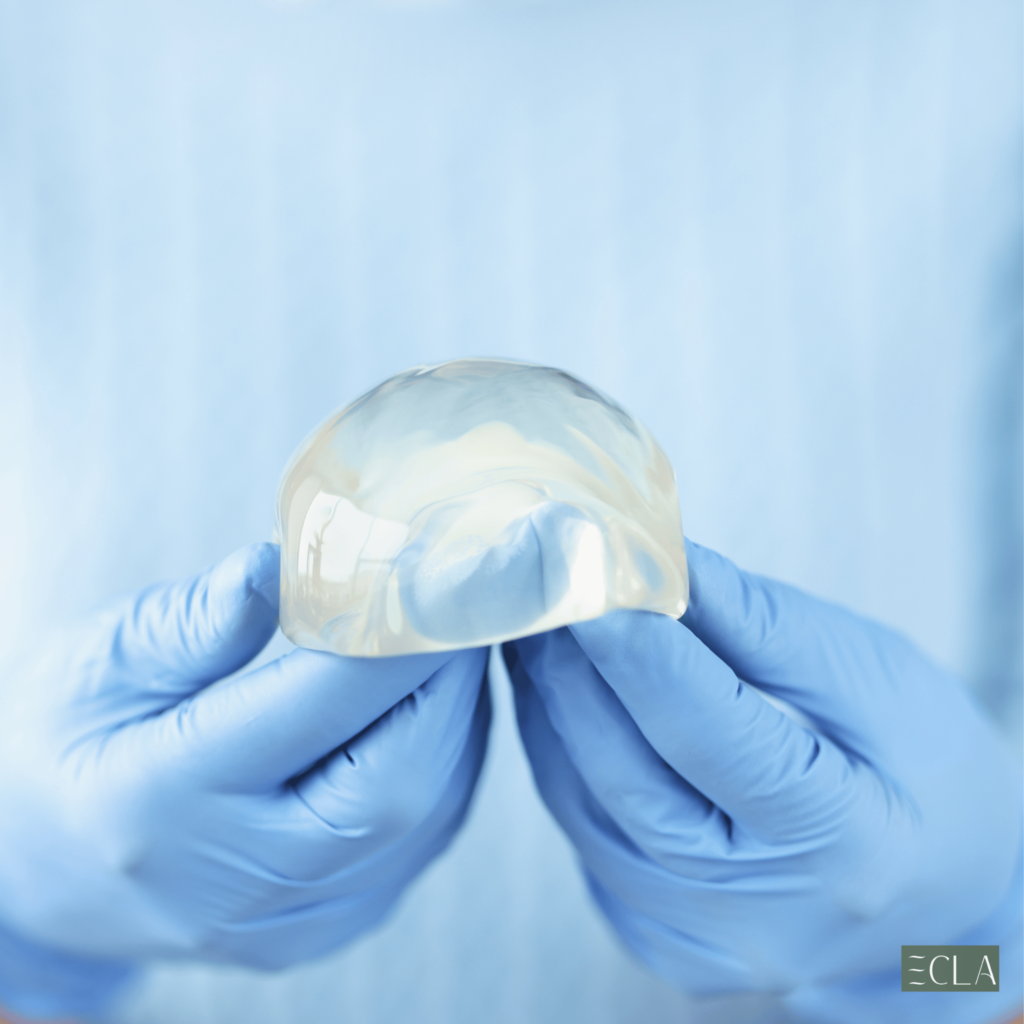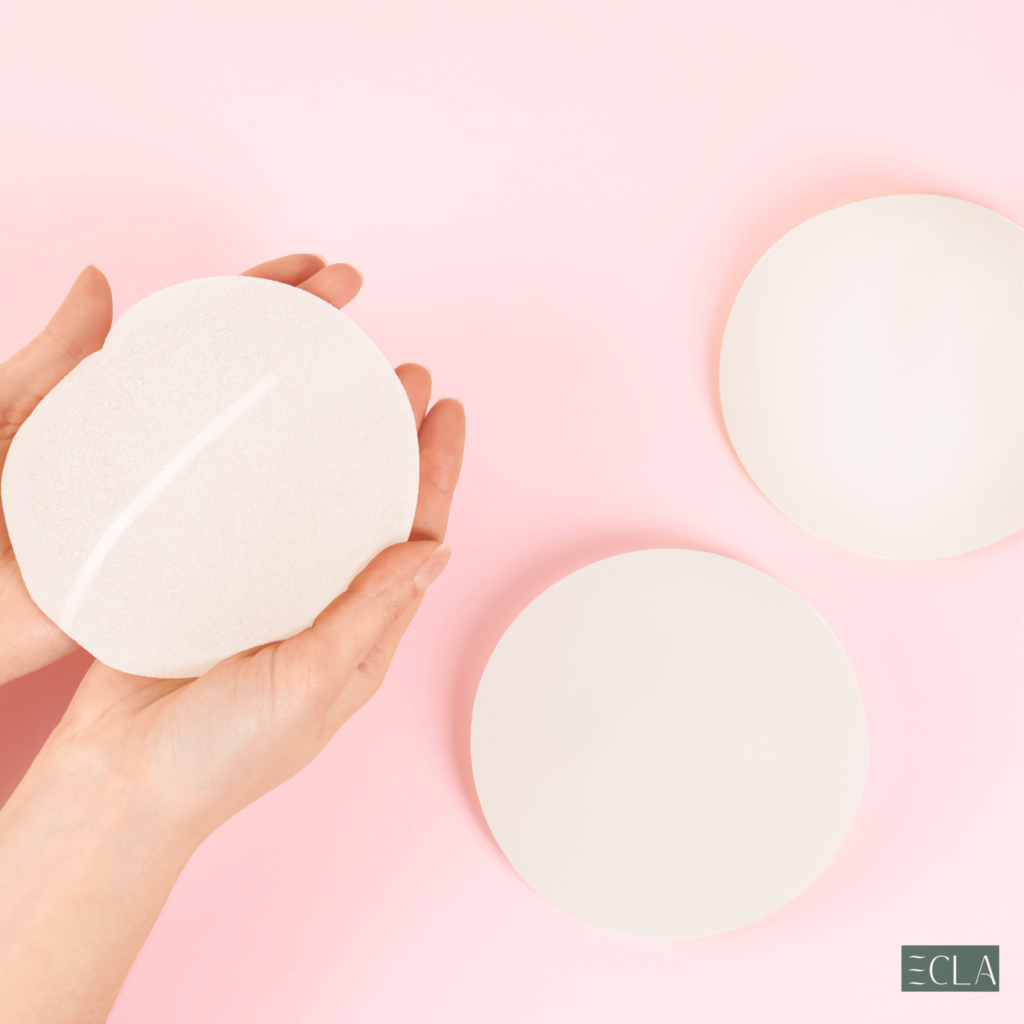Breast implanting is one of the most preferred cosmetic procedures worldwide because it enables women to possess a well-formed bust line in both contouring and natural-appearing methods. We know from the Ecla Clinic that the type of implant chosen is key to achieving natural-looking results. Silicone and saline are the two most common types of implants used in breast augmentation. All have their own properties, pros, and cons. This article looks at the debate concerning silicone vs. saline implants, so you can get an idea of what this means for your situation and health.
Understanding Breast Implants

In other words, breast implants are medical devices placed under the breast tissue or chest muscles to improve size, shape, and fullness. They are primarily used in breast augmentation procedures to:
- Enhance breast size and shape.
- Replacing breast volume that has been lost after weight reduction or pregnancy
- Symmetry reconstruction of the breast
Silicone Implants
The silicone implants are filled with a type of gel called “silicone” to give them a touch and feel like natural breast tissue. They are prefilled with gel and come in a tough silicone shell. Silicone exposed board-certified plastic surgeons and aesthetic silicone implants come in a range of sizes and shapes that provide the possibility for customization.
Advantages of Silicone Implants
- Natural Feel and Appearance: Silicone gel is similar in texture to human fat, making it look perfectly natural. Silicone implants are popular with both breast implant surgeons and women because of the way they look and feel (more like a natural, home-grown technique than saline).
- Less Rippling: Silicone implants show less rippling under the skin, especially in women with little breast tissue.
- Wider range of options: silicone implants are available in a range of different shapes, sizes, and profiles to allow further flexibility, allowing you to achieve your aesthetic goals.
Disadvantages of Silicone Implants
- Larger Incisions: Silicone implants come pre-filled, meaning the incision for placement needs to be larger, leading to more noticeable scarring.
- Implant Rupture Detection: Detecting a ruptured implant in silicone is generally more difficult. Patients are advised to undergo regular MRI scans every two years after the implants.
- Cost: Silicone implants are typically more expensive compared to saline implants.
Saline implants
Saline implants are filled with sterile salt water (saline solution). Saline implants can be inserted empty into the body, and once in place, they are filled to size, allowing for smaller incisions than silicone. In the case of saline implants, silicone is used to make their outer shell.
Advantages of Saline Implants
Smaller Incisions: Saline breast implants, as they are filled only after insertion into the body, also require smaller incisions, which help reduce visible scarring.
Easy Rupture Detection: Saline rupture is easily identifiable by the fact that it will deflate and, if broken down in our bodies system, your body naturally absorbs saline. It is easy to identify and does not pose any health risks.
Adjustable Volume: In turn, this adjustability in terms of volume enables a minor change to the size and is best used during surgery on minutes left before its full completion so that perfect symmetry balances can be made.
Disadvantages of Saline Implants
- Less natural feeling: Silicone implants are more popular because saline can feel firmer and less natural. They can have a ripple effect, too—something that’s extra-noticeable in women who don’t have much “padding”.
- Higher Risk of Rippling: Because saline material, in general, is more detectable under the skin than silicone, rippling tends to be far easier to see and therefore identify.
- Potential for Deflation: Although it is easier to spot a rupture, possible deflations happen more frequently with saline implants, which leads to an oblique look that needs corrective surgery.
Appearance and texture differences
Before choosing silicone or saline implants, it is important to remember that each one will give a somewhat different appearance and feel to the breasts.
Visual Appearance
Silicone Implants:
- Natural look: Generally, people choose silicone implants for a natural look. This type of implant generally provides a more natural breast shape, especially for patients with less native breast tissue.
- Lower edges: As silicone gel has a more cohesive character, the breast or implant seems to be less fuzzy on palpation and provides good contour.
Saline Implants:
- Rippling Risk: Saline is more likely to ripple, especially with thin skin or less breast tissue.
- Solidity: Saline implants may be solid to the touch, more so than organic breast tissue.
Textural Feel
Silicone Implants:
- Feels Soft and Supple: The gel of silicone implants is designed to imitate human fat holding a texture much like that of natural breast tissue.
Saline Implants:
- Firmness: Saline implants may feel firmer, akin to a water balloon, which can come across as less natural than the softer silicone alternative.
Surgical Considerations
Choosing between silicone and saline implants also dictates the type of surgical procedure as well as post-operative care.
Incision and Placement
Silicone Implants:
- More Extended Incision: The incision required for silicone implants is slightly larger by virtue of being prefilled. Classic incision sites are under the breast, around the areola, or inside the armpit.
- Placement options: above the muscle or below the muscle, depending on a patient’s build and desired effect.
Saline Implants:
Less Invasive: Because the saline for these implants can be added after insertion, a smaller incision is necessary, resulting in scars that may appear less prominently.
Adjustable: Saline implants enable the surgeon to adjust how much saline can be placed in them even during surgery, thereby ensuring symmetry and volume.
Which looks more natural?
The answer as to which implant looks best naturally is usually dependent on the patient and their very own individual body type.
Silicone Implants:
- Consensus: Most women and plastic surgeons tend to believe that silicone implants give a more natural look and feel, especially with thin-skinned patients.
- Aesthetics: The cohesive gel in silicone implants better replicates the texture of breast tissue, with more lifelike contours.
Saline Implants:
- Versatility: Saline implants may not feel as real, but they can be adjusted for smaller incision insertion size.
- Individual Choice: Saline implants give some women a real sense of security by being able to tell right away if their implant has ruptured and that the saline solution would be harmlessly absorb into their body.
Myths About Breast Implants
There are many misconceptions about breast implants that are out there, including scary cancer risks, the need to replace them every ten years, and the list goes on. Many of these devices are over ten years old, and research hasn’t shown any conclusive evidence yet that implants cause cancer. People can make better decisions when they recognize these myths.
Conclusion
The differences between silicone versus saline implants for breast augmentation are all going to be down to personal preference, which will ultimately impact the desired appearance and feel of implants in your body that fit around your lifestyle. At Ecla Clinic we strive to provide you with the information and guidance required so that you can make an educated decision. Silicone feels incredibly natural, but many prefer the security and flexibility of saline. In either case, you can trust our experts to design a beautiful outcome suited just for you.





